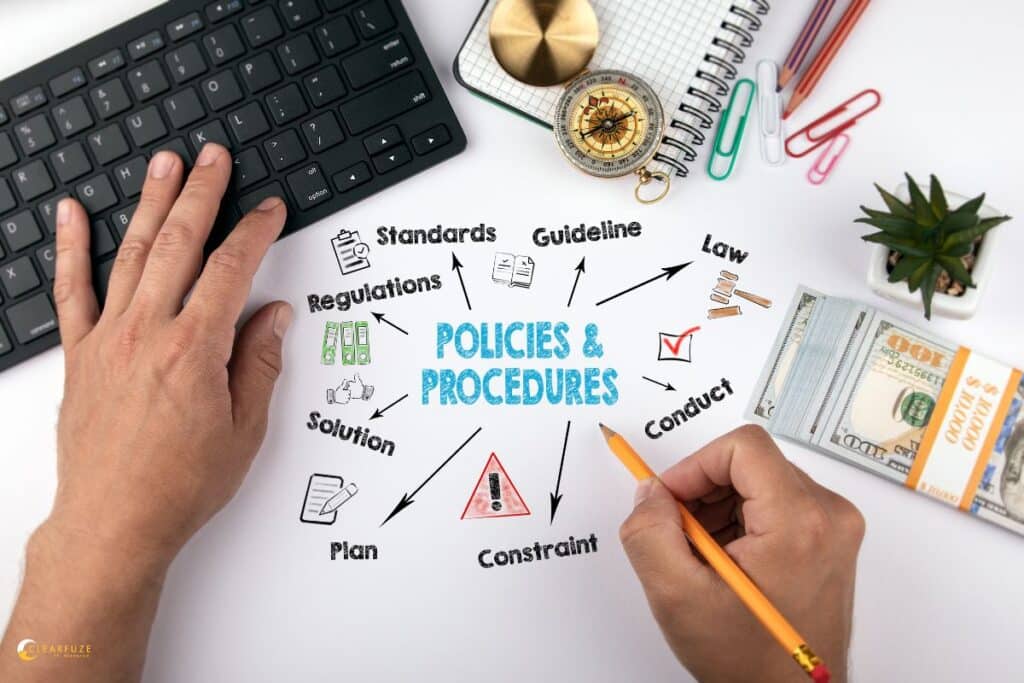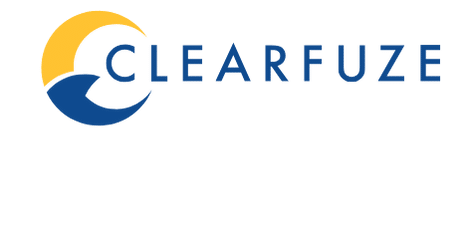Martinez & Associates, a 15-person law firm in downtown Los Angeles, was spending 40% of their billable hours on administrative tasks. Partners were manually tracking case files, assistants were duplicating data entry, and client updates were scattered across email chains.
After implementing just five operational efficiency strategies, they reduced admin time to 15% and increased billable hours by $180,000 annually.
Their secret?
They stopped working harder and started working smarter.
In this guide, you’ll discover 21 proven strategies to streamline your operations, reduce waste, and boost profitability without sacrificing quality.
Table of Contents
ToggleWhat is Operational Efficiency?
Operational efficiency means getting maximum output from minimum input. It’s doing more with less; less time, fewer resources, lower cost; while maintaining or improving quality.
Think of it like a well-tuned engine. An efficient operation runs smoothly with minimal waste, just like a car that gets excellent gas mileage without sacrificing performance.
Operational efficiency refers to the ability to deliver products and services in the most cost-effective manner while maintaining high product quality and customer satisfaction.
Efficient vs. Inefficient Operations:
- Efficient: A dental practice schedules appointments to minimize gaps, prepares rooms in advance, and uses digital records for instant access
- Inefficient: The same practice double-books appointments, searches for paper files between patients, and keeps clients waiting while staff scrambles
At ClearFuze, we’ve analyzed hundreds of small to mid-size businesses across LA’s healthcare and legal sectors. The most successful ones share one trait: they’ve mastered the art of improving operational performance through systematic best practices.
Why Efficiency Operations Management Matters for Business Growth
Operational efficiency is crucial for unlocking growth potential that’s already inside your business, not just cutting costs.
The Business Impact:
- Cost Reduction: Streamlined business operations typically reduce operating costs by 15-30%
- Revenue Growth: Freed-up resources can focus on revenue-generating activities
- Customer Satisfaction: Faster, smoother processes improve performance and client experience
- Employee Morale: Less frustration with inefficient processes means happier team members
Operational efficiency helps businesses achieve their business goals while increasing profitability. Greater operational efficiency creates competitive advantages that compound over time.
Consider Riverside Medical Group, a 25-person practice we work with. Before efficiency improvements, they were turning away 20 new patients monthly due to scheduling bottlenecks.
After implementing workflow optimization and patient flow improvements, they now accommodate 35 additional patients monthly; translating to $420,000 in additional annual revenue.
According to recent workplace research, companies are 17% more productive and 21% more profitable when they offer training to engaged employees.

How Do You Measure Operational Efficiency?
You can’t improve efficiency without measurement. Here are the key performance indicators that matter:
Financial Metrics:
- Cost per unit of output: Total costs divided by units produced
- Revenue per employee: Annual revenue divided by number of employees
- Operating margin: Operating income divided by revenue
- Efficiency ratio: Quality of the output compared to amount of resources invested
Time-Based Metrics:
- Cycle time: The time it takes to complete a process from start to finish
- Throughput: Number of units processed in a given time period
- Utilization rate: Percentage of available time actually spent on productive work
Quality Metrics:
- Error rate: Percentage of outputs requiring rework
- Customer satisfaction scores: Direct feedback on service quality
- First-call resolution rate: Percentage of issues solved on first contact
Key Performance Indicators (KPIs): According to NILG.AI research, a world-class Overall Equipment Effectiveness (OEE) score is generally considered to be 85% or higher.
It’s important to track these metrics consistently. Start by picking 2-3 metrics that align with your biggest pain points. Track them weekly for a month to establish your baseline for measuring operational efficiency.
How to Improve Operational Efficiency: 21 Actionable Strategies
Here are the 21 actionable strategies that you can follow to improve operational efficiency in business:
Strategy 1: Conduct a Comprehensive Process Audit
Before you can fix anything, you need to know what’s broken.
Step-by-Step Process Audit:
- Map current workflows for your top 3 business processes
- Time each step using a stopwatch over multiple cycles
- Identify bottlenecks where work piles up or slows down
- Spot redundancies where the same work happens twice
- Calculate costs of delays, errors, and rework
Action Item: Choose one process that frustrates your team daily. Spend 2 hours this week observing and timing each step.
Strategy 2: Implement Process Mapping and Value Stream Analysis
Visual maps reveal inefficiencies that spreadsheets miss.
Create a simple flowchart showing every step in your process. Use different colors for value-adding steps (green) versus waste (red). Most businesses discover 30-40% of their steps add no customer value.
Quick Win: Draw your customer onboarding process on a whiteboard. Circle every step that directly benefits the customer—you’ll be surprised how few there are.
Strategy 3: Adopt Lean Management Principles
Lean thinking focuses on eliminating eight types of waste: defects, overproduction, waiting, non-utilized talent, transportation, inventory, motion, and extra processing.
Pacific Accounting Services, a 12-person CPA firm we work with, applied lean principles to their tax preparation process.
They eliminated duplicate data entry, reduced client wait times from 48 hours to 6 hours, and increased their capacity by 40% during tax season.
This Week: Identify which of the eight wastes costs your business the most time or money.
Strategy 4: Leverage Automation for Routine Tasks
Automation isn’t just for manufacturing companies—service businesses can automate repetitive tasks to increase operational efficiency.
According to Vena Solutions, roughly 60% of companies currently use technology and automation solutions in their workflows, with businesses achieving an average ROI of 240% and typically recouping their investment within six to nine months.
High-ROI Automation Opportunities:
- Appointment scheduling: Online booking systems reduce phone tag
- Invoice generation: Automatic billing saves 2-3 hours weekly
- Data entry: Form automation eliminates human error
- Report generation: Automated dashboards provide real-time insights
Industry-Specific Impact: According to Accenture research, up to 80% of finance department’s transactional work could be automated, while payment automation allows businesses to free up over 500 hours annually.
ROI Calculation: If automation saves 5 hours weekly at $25/hour, that’s $6,500 annually. Most automation tools cost $1,200-$3,600 per year—giving you 80-440% ROI.
Automation helps streamline operations while reducing operating expenses and improving accuracy.
Strategy 5: Optimize Resource Allocation
Match your best resources to your highest-impact activities. Effective resource planning and resource utilization are critical for enhancing operational efficiency.
Use the 80/20 rule: identify the 20% of activities that generate 80% of your results. Assign your top performers to these critical tasks.
Resource Allocation Framework:
- High-skill, high-impact tasks: Your best people
- High-skill, low-impact tasks: Train others or eliminate
- Low-skill, high-impact tasks: Systematize and delegate
- Low-skill, low-impact tasks: Automate or outsource
Resource utilization optimization ensures every aspect of improving operational efficiency contributes to your business goals.
Strategy 6: Streamline Communication Channels
Information silos kill efficiency faster than any other factor. Inefficiency often stems from poor communication workflows.
According to Slack research, 70% of employees believe they’re swamped with too many unnecessary meetings and emails, considering these redundant activities as roadblocks to their productivity.
Communication Audit Checklist:
- How many tools does your team use to communicate?
- How often do people ask “Did you get my message?”
- How many meetings could be emails?
- How many emails could be quick calls?
Action Step: Consolidate to 2-3 communication tools maximum. Set clear rules about which tool to use when. This simple workflow change can dramatically improve your business communication.
Strategy 7: Enhance Cross-Departmental Collaboration
Break down walls between departments with shared goals and regular touchpoints.
Collaboration Techniques:
- Weekly cross-department standup meetings (15 minutes max)
- Shared project management systems where everyone can see progress
- Joint performance metrics that require departments to work together
- Cross-training programs so people understand other roles
Strategy 8: Implement Just-in-Time Inventory Management
Reduce carrying costs while maintaining service levels.
For service businesses, “inventory” might be:
- Excess office supplies taking up space and cash
- Pre-printed forms that become outdated
- Software licenses for inactive users
Monthly Action: Review what you’re stockpiling and ask “Do we really need 6 months’ worth?”

Strategy 9: Develop Standardized Operating Procedures (SOPs)
SOPs ensure consistent quality regardless of which team member handles the task.
SOP Template:
- Purpose: Why this process exists
- Scope: When to use this procedure
- Steps: Numbered list of actions
- Quality checks: How to verify it’s done right
- Troubleshooting: Common problems and solutions
Start Here: Write SOPs for your 3 most frequently performed tasks.
Strategy 10: Invest in Employee Training and Development
Well-trained employees work faster and make fewer mistakes. Improving productivity through training is one of the most effective ways to improve operational efficiency.
According to Bridge LMS research, organizations that provide career advancement and skills development opportunities can save an estimated $8,053 per employee each year through increased productivity, decreased churn, and lower healthcare costs.
High-Impact Training Areas:
- Software proficiency: Advanced features save time daily
- Communication skills: Clear communication prevents rework
- Problem-solving: Employees who can solve issues independently reduce interruptions
- Time management: Personal efficiency skills benefit everyone
According to Keevee research, the global corporate training market is projected to reach $487 billion by 2025, with teams trained in collaboration improving productivity by 25%.
ROI Tracking: Training improves performance by 22%, while customer satisfaction increases by 19% after employee training programs. This approach will help improve operational efficiency across every aspect of a business.
Strategy 11: Utilize Data Analytics for Decision Making
Data-driven decisions beat gut feelings every time.
Key Operational Metrics to Track:
- Response times to customer inquiries
- Processing times for standard transactions
- Error rates by process and person
- Capacity utilization during peak and off-peak times
Weekly Habit: Spend 30 minutes reviewing your key metrics and identifying one improvement opportunity.
Strategy 12: Adopt Cloud-Based Management Systems
Cloud systems provide real-time access to information from anywhere. Modern management software can transform business operations.
According to CloudZero research, 94% of enterprises use cloud services, with businesses saving 30% on IT costs through cloud adoption.
| System Type | Efficiency Benefit | Time Savings |
| Document Management System | Instant file access | 2-3 hours/week |
| Project Management | Real-time collaboration | 4-5 hours/week |
| Customer Relationship Management Software | Centralized client data | 3-4 hours/week |
| Accounting Software | Automated bookkeeping | 5-6 hours/week |
According to OTAVA research, companies can save 15-40% on infrastructure costs by migrating to the cloud, with cloud migration reducing downtime by 57%.
Cloud-based management systems support operational excellence by eliminating the time spent searching for information and enabling real-time collaboration.
Action Item: Identify your biggest “file hunting” time waster and research cloud solutions this month.
Strategy 13: Optimize Workplace Layout and Design
Physical space impacts productivity more than most realize.
Layout Principles:
- Minimize walking distances between frequently used areas
- Create dedicated spaces for focused work vs. collaboration
- Reduce visual distractions in concentration zones
- Ensure adequate lighting to prevent eye strain and fatigue
Quick Test: Track how many times you or your team get up to retrieve something during a typical workday.
Strategy 14: Implement Energy Efficiency Measures
Lower utility costs while boosting your environmental reputation.
Cost-Saving Initiatives:
- LED lighting reduces electricity costs by 75%
- Programmable thermostats optimize HVAC usage
- Energy-efficient equipment lowers operating costs
- Power management settings on computers and printers
Dual Benefit: Energy efficiency reduces costs and appeals to environmentally conscious clients.
Strategy 15: Establish Performance Monitoring Systems
Real-time tracking enables immediate course corrections.
Monitoring Tools:
- Dashboard software for key performance indicators
- Time tracking systems to identify productivity patterns
- Quality control checklists for consistent service delivery
- Customer feedback systems for immediate service insights
Implementation: Start with monitoring one critical process, then expand gradually.
Strategy 16: Create Continuous Improvement Teams
Empower employees to identify and solve efficiency problems.
Team Structure:
- Representatives from each department for diverse perspectives
- Rotating leadership to develop multiple champions
- Monthly meetings with specific improvement targets
- Budget authority to implement small changes quickly
Success Metric: Track the number of employee-suggested improvements implemented monthly.
Strategy 17: Leverage Customer Feedback for Process Improvement
Your customers see inefficiencies you might miss.
Feedback Collection Methods:
- Post-service surveys asking about process pain points
- Customer advisory panels for deeper insights
- Complaint analysis to identify recurring issues
- Social media monitoring for unsolicited feedback
Translation Process: Convert feedback into specific process changes within 30 days.
Strategy 18: Optimize Supply Chain Relationships
Strong vendor partnerships improve efficiency and reduce costs.
Optimization Strategies:
- Vendor consolidation reduces management overhead
- Performance scorecards ensure accountability
- Long-term contracts for better pricing and priority service
- Regular relationship reviews to address issues proactively
Negotiation Tip: Offer longer contracts in exchange for better terms and service levels.
Strategy 19: Implement Predictive Maintenance Programs
Prevent equipment failures before they happen.
Maintenance Approach:
- Regular inspection schedules for critical equipment
- Performance monitoring to identify declining efficiency
- Vendor maintenance contracts for complex systems
- Replacement planning based on equipment lifecycles
At ClearFuze, we’ve seen businesses reduce unexpected IT downtime by 90% through proactive maintenance programs.

Strategy 20: Develop Efficient Remote Work Policies
Remote work can boost efficiency when managed properly. Operational efficiency can help organizations maintain operational efficiency even with distributed teams.
According to Archie research, 84% of employees report being more productive in hybrid or remote settings, with organizations able to save an average of $11,000 per year for every employee who works remotely half of the time.
Remote Work Framework:
- Clear performance expectations based on outcomes, not hours
- Communication protocols for different types of interactions
- Technology standards ensuring everyone has proper tools
- Regular check-ins to maintain connection and accountability
According to U.S. Bureau of Labor Statistics research, remote work has positive associations with total factor productivity growth across 61 industries, with the average workday shortening by 36 minutes while productivity increased by 2%.
Remote work policies can also improve profit margins by reducing costs and improving operational processes while maintaining quality and customer satisfaction.
Key Insight: Focus on results, not presence. Many of our clients report 20-30% productivity increases with well-managed remote work.
Strategy 21: Establish an Efficiency-Focused Organizational Culture
Make efficiency everyone’s job, not just management’s responsibility.
Culture Building Actions:
- Recognize and reward efficiency improvements publicly
- Share success stories from efficiency initiatives
- Include efficiency goals in performance reviews
- Encourage experimentation with new approaches
Leadership Tip: Model efficiency behaviors yourself; your team will follow your example.
Top Challenges When Trying to Maximize Operational Efficiency
Even with the best strategies, you’ll face obstacles. Here are the most common challenges that prevent organizations from achieving operational efficiency:
- Employee Resistance to Change – People fear efficiency improvements will eliminate their jobs. Address this by involving employees in the improvement process and emphasizing how efficiency makes their work easier, not obsolete.
- Lack of Management Buy-In Efficiency – Performance initiatives need leadership support to succeed. Build your case with data showing clear ROI and start with small wins to demonstrate value.
- Insufficient Resources for Implementation – Many efficiency improvements require upfront investment. Prioritize changes with the highest ROI and implement them in phases.
- Measuring the Wrong Metrics – Focus on metrics that directly impact customer value and business results, not just internal efficiency measures. Operational efficiency helps companies when they track the right performance indicators.
Improve Operational Processes with Technology: The Digital Transformation Approach
Technology isn’t just a tool—it’s an efficiency multiplier that can transform how your business operates.
Digital Transformation Priorities:
- Automate repetitive tasks that consume significant time
- Digitize manual processes to reduce errors and speed up workflows
- Integrate systems to eliminate data silos and duplicate entry
- Implement real-time reporting for faster decision-making
ROI Example: Westside Dental Practice invested $15,000 in practice management software. Within 12 months, they reduced administrative time by 25% and increased patient capacity by 30%, generating an additional $125,000 in revenue.
Industry-Specific Approaches to Operational Efficiency
Different industries have unique efficiency opportunities:
Professional Services (Law, Accounting, Consulting):
- Document automation and templates
- Time tracking and billing optimization
- Client portal systems for self-service
Healthcare:
- Patient flow optimization
- Electronic health records integration
- Appointment scheduling automation
Manufacturing:
- Lean production principles
- Predictive maintenance programs
- Supply chain optimization
Retail:
- Inventory management systems
- Point-of-sale integration
- Customer relationship management
Service-Based Businesses:
- Field service management software
- Route optimization
- Mobile workforce tools
How to Create and Implement an Operational Efficiency Roadmap
Success requires a systematic approach, not random improvements.
6-Month Efficiency Roadmap
Month 1-2: Assessment and Planning
- Conduct comprehensive process audit
- Identify top 3 improvement opportunities
- Set baseline metrics and improvement targets
Month 3-4: Quick Wins Implementation
- Focus on changes requiring minimal investment
- Train staff on new procedures
- Begin tracking improvement metrics
Month 5-6: Major Initiative Launch
- Implement technology solutions
- Roll out new processes organization-wide
- Measure results and adjust as needed
Success Factors:
- Assign specific owners to each initiative
- Set monthly check-in meetings
- Celebrate milestones and achievements
- Be prepared to adjust based on results
Measuring ROI: Quantifying the Impact of Your Efficiency Initiatives
Proving the value of efficiency improvements ensures continued investment and support.
ROI Calculation Framework
Financial Benefits:
- Cost savings from reduced labor, materials, or overhead
- Revenue increases from improved capacity or customer satisfaction
- Risk reduction from improved quality or compliance
Cost Considerations:
- Technology investments and implementation costs
- Training and change management expenses
- Temporary productivity losses during transition
ROI Formula: ROI = (Benefits – Costs) / Costs × 100
Example: A $10,000 investment in automation saves $3,000 annually in labor costs. ROI = ($3,000 – $10,000) / $10,000 × 100 = 30% annually after the first year.
According to ARDEM research, businesses achieve an average ROI of 240% from automation, typically recouping their investment within six to nine months after deployment.
Non-Financial Benefits to Track:
- Employee satisfaction and retention
- Customer satisfaction scores
- Quality improvements and error reduction
- Competitive advantages gained
Wrapping Up
Operational efficiency is an ongoing journey of continuous improvement. The 21 strategies outlined here provide a comprehensive roadmap for transforming your business operations.
Key Takeaways:
- Start with a thorough assessment of current processes
- Focus on high-impact improvements first
- Involve employees in the improvement process
- Measure results consistently
- Maintain momentum with regular reviews and updates
Your 30-Day Action Plan:
- Week 1: Conduct process audit for your biggest bottleneck
- Week 2: Implement 2-3 quick wins from the strategies above
- Week 3: Set up measurement systems for key metrics
- Week 4: Create 6-month efficiency roadmap
Next Steps:
- Choose 3 strategies that address your biggest pain points
- Set specific, measurable goals for each initiative
- Review progress monthly and adjust as needed
- Contact ClearFuze for expert guidance on technology-enabled efficiency improvements
Ready to Transform Your Operations?
ClearFuze has helped over 200 businesses across Los Angeles improve their operational efficiency by an average of 35%. Our team combines deep technical expertise with practical business knowledge to deliver measurable results.
Schedule a free efficiency assessment to identify your biggest opportunities for improvement.
Citation:
- Devlin Peck – Employee Training Statistics
https://www.devlinpeck.com/content/employee-training-statistics - NILG.AI – Operational Efficiency Metrics
https://nilg.ai/202505/operational-efficiency-metrics/ - Vena Solutions – Business Automation Statistics
https://www.venasolutions.com/blog/automation-statistics - SC Training – Workplace Productivity Statistics
https://training.safetyculture.com/blog/workplace-productivity-statistics/ - Bridge LMS – Proving ROI of Learning & Development
https://www.getbridge.com/blog/lms/proving-roi-learning-development-stats/ - Keevee – Employee Training Statistics
https://www.keevee.com/employee-training-statistics - CloudZero – Cloud Computing Statistics
https://www.cloudzero.com/blog/cloud-computing-statistics/ - OTAVA – Cloud Adoption and Migration Statistics
https://www.otava.com/blog/statistics-of-cloud-adoption-and-migration/ - Archie – Hybrid Workplace Statistics
https://archieapp.co/blog/hybrid-workplace-stats/ - U.S. Bureau of Labor Statistics – Remote Work Productivity
https://www.bls.gov/opub/btn/volume-13/remote-work-productivity.htm - ARDEM – Cost Savings of Business Process Automation
https://ardem.com/bpo/cost-savings-of-business-process-automation-in-2025/




